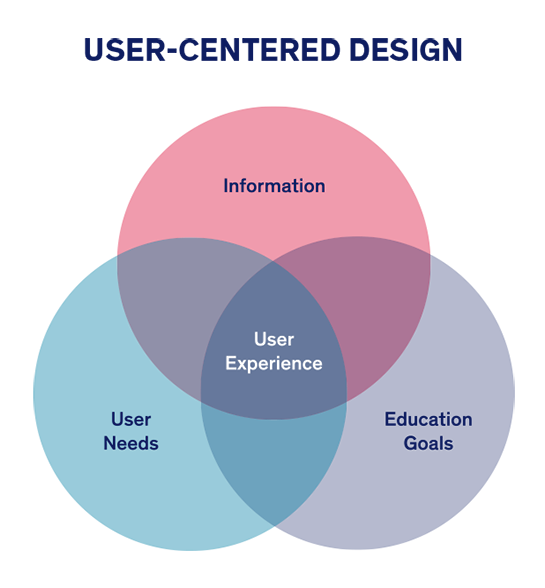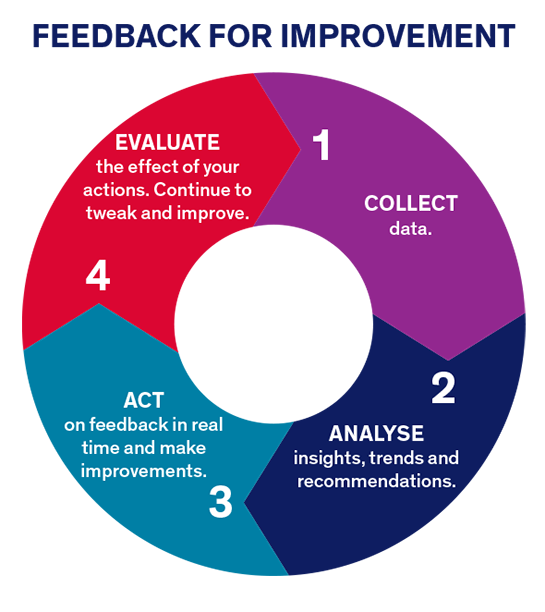The Power of Student Voices in Shaping Digital Education
by Bryan Libbin, Associate CIO for Academic Technology and Learning Innovation
quote Heading link
Students are not passive users of digital learning tools; they are active participants whose perspectives can profoundly shape the future of education technology.
text Heading link

In the ever-evolving landscape of higher education, one truth remains constant: students are at the heart of it all. When it comes to digital learning applications and online education, the voices of students are not just valuable; they are indispensable. This editorial delves into why it’s crucial to prioritize student perspectives in designing the future of educational technology.
User-Centered Design: The essence of educational technology lies in its users, and who better understands the needs, preferences, and challenges of students than the students themselves? Their feedback serves as the cornerstone for creating user-centered designs that make learning tools more effective, efficient, and user-friendly. It’s a simple yet profound truth: when students are actively engaged in shaping the tools they use, the outcome is bound to be better suited to their requirements.
Enhanced Engagement: Engaging students isn’t just a goal; it’s the heart of education. By involving students in the decision-making process surrounding digital learning applications, educators and developers gain insights into what truly motivates and engages learners. This insight paves the way for the creation of more interactive and stimulating online learning experiences, thereby enriching the quality of education.
Tailored Learning Experiences: One size never fits all in education. Every student brings a unique learning style, preferences, and needs to the table. Listening to student voices allows educators to adapt digital learning applications to cater to a diverse range of learning styles and abilities, thereby making education more accessible and effective for everyone.
Identifying Challenges: Students are on the front lines of digital education, experiencing its benefits and challenges firsthand. Their perspectives are invaluable in identifying technical glitches, usability problems, and concerns regarding privacy and security. Addressing these issues promptly can not only improve the overall online learning experience but also alleviate the frustrations that students may encounter.
text 2 Heading link

Feedback for Improvement: In the dynamic world of digital learning, continuous improvement is imperative. Student feedback serves as a compass, guiding educators, and developers to pinpoint areas requiring enhancement. Be it content quality, platform functionality, or assessment methods, this feedback loop ensures that online learning applications evolve to meet the ever-evolving needs of both students and educators.
Equity and Inclusivity: Digital learning has the potential to bridge educational gaps and foster inclusivity. However, to realize this potential, it is imperative to consider the perspectives of all students, irrespective of their backgrounds, abilities, or access to technology. By heeding student voices, we can identify and dismantle barriers to access and promote equitable educational opportunities for all.
Empowerment and Ownership: Involving students in decisions related to digital learning applications empowers them and fosters a sense of ownership over their education. When students know that their opinions are valued and acted upon, they are more likely to be engaged, motivated, and invested in their learning journey.
Ethical Considerations: Beyond functionality, students’ voices also raise crucial ethical questions regarding the use of technology in education. Concerns about data privacy, surveillance, and the ethical use of AI and algorithms in grading and assessment should not go unanswered. Engaging with students on these issues is pivotal for making ethically sound decisions in education technology.
In consideration of this, LTS has started a student blog on their website where we encourage students to write their thoughts about digital learning. Topics can include online coursework, the organization of courses in the LMS, preferred or disliked applications, the impact of social media on learning, video conferencing, lecture capture, and more. We are also adding a developer to our team, who can address student needs by developing applications that are learning-focused and student-centered.
Students are not passive users of digital learning tools; they are active participants whose perspectives can profoundly shape the future of education technology. Listening to and valuing student voices isn’t just best practice; it’s a necessity. It’s the path to creating more effective, equitable, and engaging digital learning experiences that will empower generations to come.